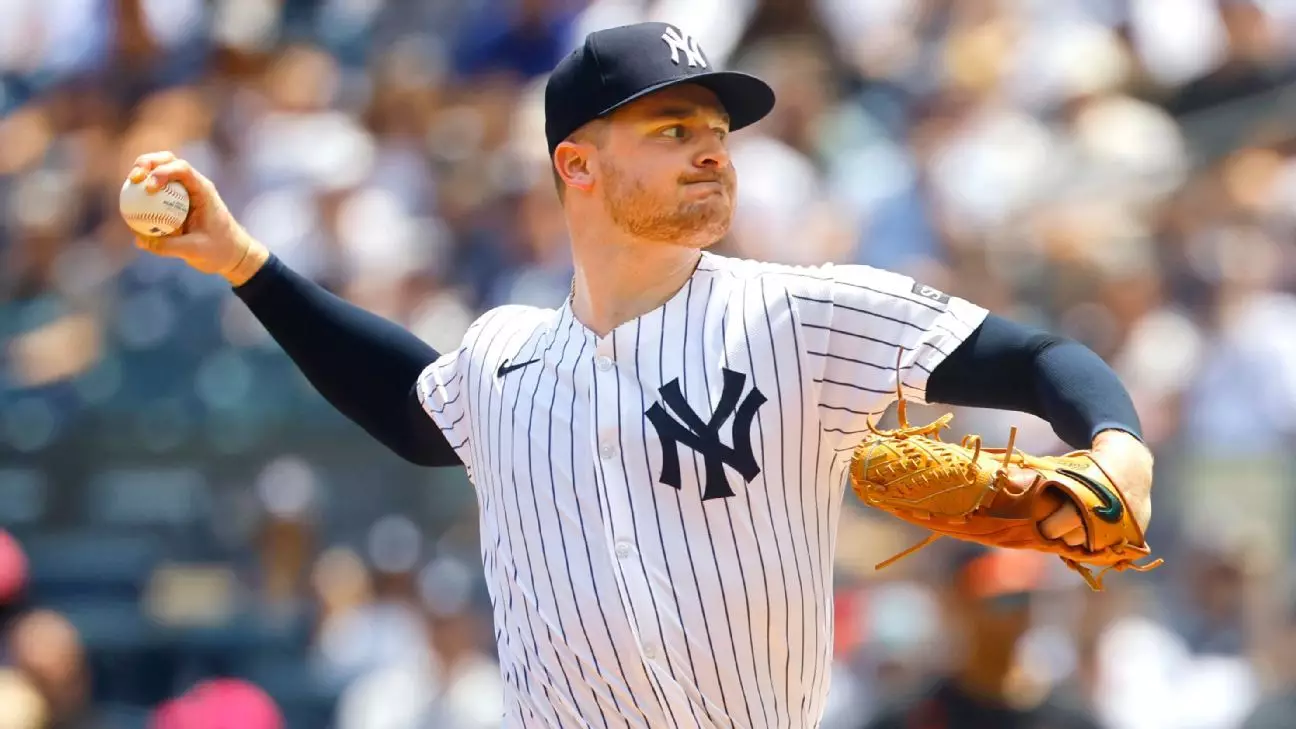The news of Clarke Schmidt’s anticipated Tommy John surgery isn’t just a personal setback for the emerging right-hander; it’s a reflection of the brutal physical toll that professional pitching inflicts. For Schmidt, a talented young arm with burgeoning potential, this injury marks a significant crossroads. His 3.32 ERA across 14 starts earlier this season showcased not only his skill but also the promise he held for the Yankees’ future. Yet, behind these promising numbers lies the harsh truth that an elite pitcher’s career can be derailed by the relentless wear and tear on the elbow joint.
The recurrence of Tommy John surgery in Schmidt’s career underscores an often-ignored aspect of pitching: the fragility of human anatomy under extreme duress. That this will likely be his second such procedure paints a picture of a pitcher who has battled both injuries and the relentless pressure to perform. It also raises questions about the long-term health management within the Yankees’ pitching staff and whether enough is being done to prevent such setbacks before they become unavoidable crises.
Injury Woes Amplify Yankees’ Rotation Problems
The Yankees’ season has been marred by an unprecedented wave of pitching injuries, and Schmidt’s injury is just the latest chapter in this ongoing saga. With Gerrit Cole already sidelined after undergoing Tommy John surgery earlier in the year, the team’s starting rotation has become a patchwork of fill-ins and inexperienced arms. It’s a hard truth that even the deepest rosters can be stretched thin when multiple key pieces go down simultaneously.
The situation exposes a fundamental flaw in the Yankees’ pitcher development and injury prevention strategies. Relying heavily on the hope that younger or less experienced pitchers can shoulder the workload without sacrificing their health is a gamble that is quickly unraveling. The injury to Schmidt also demonstrates how quickly a season can shift from hope to crisis, compelling management to look beyond internal options and consider the trade market—an uncertain and risky endeavor in its own right, especially with the trade deadline looming.
Winning the Cultural War Against Injuries
The Yankees’ inability to maintain a healthy starting rotation isn’t solely a matter of bad luck; it’s a reflection of a deeper cultural issue regarding pitcher health. The modern era of baseball has seen an astonishing increase in arm injuries, often attributable to workload, training methods, and perhaps even overemphasis on velocity and pitch counts. The club’s response, therefore, must entail introspection and a strategic overhaul.
For the Yankees, turning the injury tide will require more than short-term fixes. It demands a comprehensive approach encompassing recovery, health monitoring, workload management, and perhaps even a cultural shift away from aggressive use of young pitchers before they are ready. Only then can the team hope to mitigate future losses and build a resilient rotation capable of weathering inevitable setbacks.
Uncertain Future, Urgent Search for Reinforcements
With Schmidt’s season coming to an abrupt halt and other starters already sidelined, the Yankees must face an urgent reality: they cannot rely solely on internal solutions. Current options like Carlos Carrasco, Allan Winans, and prospect Cam Schlittler are all either seasoned but unproven or still developing. The veteran JT Brubaker is shifting to a bullpen role, further diminishing their starting depth.
This impending crisis will force Yankees’ management to make strategic moves before the July 31 trade deadline. The team’s focus will increasingly shift toward acquiring proven starting pitching to fill the void. With a rotation that currently includes Max Fried, Carlos Rodon, Will Warren, and Marcus Stroman, the Yankees’ challenge is not just immediate but long-term. They need to identify reliable veterans or potentially strike blockbuster deals to reassert control over their postseason destiny and restore confidence that their pitching staff can withstand the inevitable adversities of a grueling season.
Clarke Schmidt’s injury embodies the unyielding adversity faced by teams seeking to contend in Major League Baseball. It exposes the vulnerabilities of even promising young pitchers and underscores the importance of strategic roster management. Though baseball will always be a game of inches and injuries, the Yankees’ current predicament reveals a critical need for systemic change—both in injury prevention and in assembling a resilient rotation capable of managing the rigors of the season. The road ahead is daunting, but it also offers an opportunity for self-reflection, innovation, and perhaps, a renewed commitment to a sustainable approach to pitching health.

